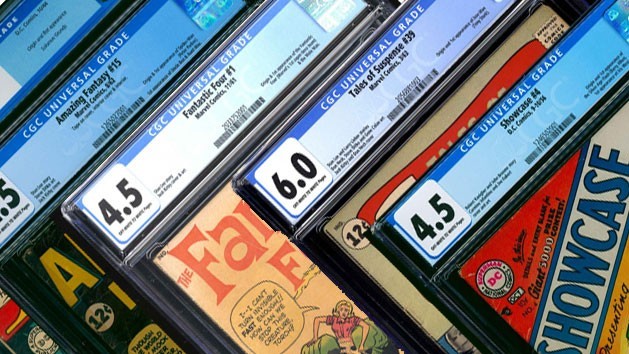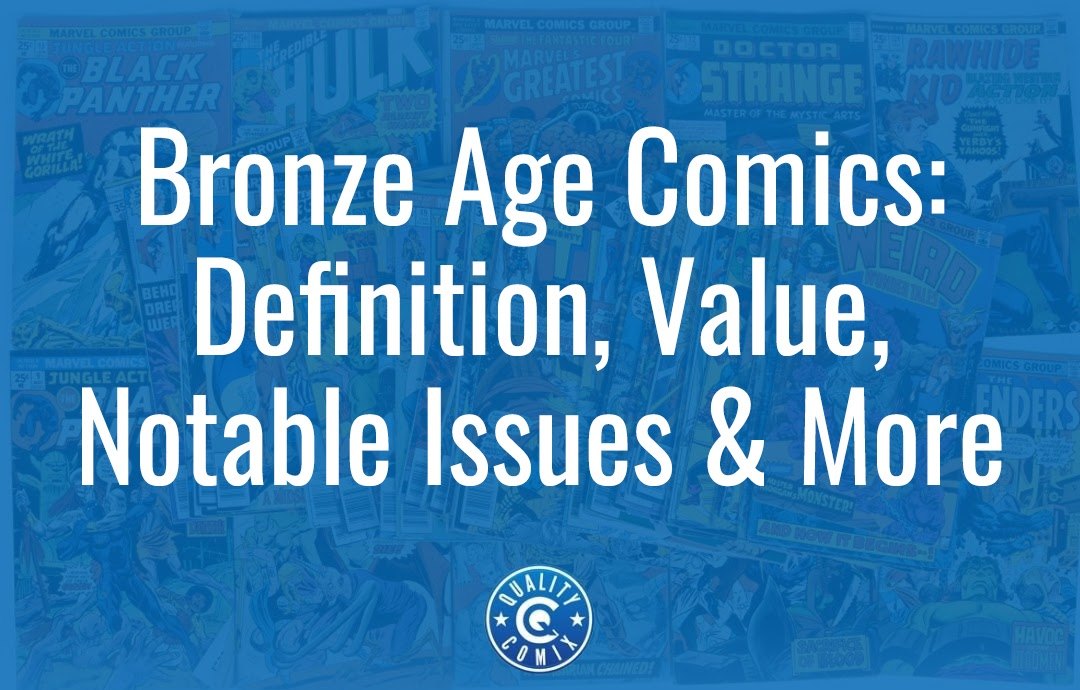
Comics have been around for nearly a century in what we know of as their current form (though sequential art has been around much longer), and throughout the history of comics, collectors and fans have defined a series of eras or "ages" for those comics. The age a comic falls into is correlated to its popularity and value, so it's important to know them.
Table of Contents
What Are Comic Ages?
The era in which a comic was published is a pretty important signifier. The eras or ages are marked by milestones in the comics industry, with significant changes ranging from who is in charge to what laws are regulating them to how many copies of comics are printed and what prestige they are given.
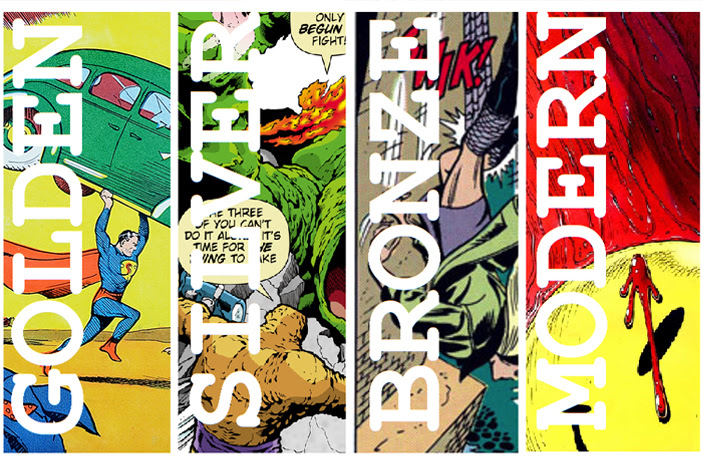
We've defined the ages elsewhere, such as in our comic terminology glossary:
- Platinum Age: Comics published before 1935. These range from newspaper funnies to the prototype "comics" that may only superficially resemble what comics have become.
- Golden Age: 1935-1947. This era begins with the debut of National, the company that would become DC, and encompasses the introduction of many now-iconic superheroes and other characters.
- Atomic Age: 1947-1958. A contentious age that many don't define as separate from Gold and Silver. The Atomic Age is characterized by a shift from wartime comics to post-war space exploration and sci-fi themes. This era also includes more comic books with darker themes, including true crime, western, war, and adult comics.
- Silver Age: 1958-1970. The slow growth of superhero comics, where Marvel stepped into the superhero ring and arguably took over, and many great names like Jack Kirby and Steve Ditko are active.
- Bronze Age: 1970-1985. An explosion in comics, with the introduction of many now-great characters and books, and many more that never catch on. Prices of comics skyrocket in this era.
- Copper Age: 1985-2000. Newsstand comic sales dwindle while direct sales take over. This era is also marked by a shift towards adults as customers rather than kids, a growing nostalgia for early comics, and a vast array of multimedia tie-ins.
- Plastic Age: 2000-2020. Comic pricing reached an all-time high, the number of books exploded, and publishers started introducing digital comics. Numerous marketing gimmicks are created in an attempt to artificially increase the collector's value of comics. However, mass printing means all but the rarest variants are generally still cheap and readily available.
- Modern Age: 1985-Present. An alternative definition for post-2000 comics broadly encompasses all the trends that have picked up over the last couple of decades.
Today, we're primarily interested in the age smack dab in the middle: the bronze age.
What is the Bronze Age of Comics?
The Bronze Age of comics is very different from the ages that came before. As you can see above, it encompasses the comics published between 1970 and 1985. Many of you reading this were likely born in this era, so these comics are likely to have some significant nostalgia for you.
When did the Bronze Age start?
This is where there's a little bit of debate. The Bronze Age, unlike some of the earlier ages, doesn't really have a fixed date or event that defines when it started. Different collectors and scholars, as well as media historians, define it differently. Everyone agrees that it was in or around 1970, mostly because of a series of changes in comic book culture.
So, what happened?
One of the biggest changes was the first true infusion of comic fans into the industry. Prior to the bronze age, comics were mild entertainment, something you bought for your kid when you were buying a newspaper for yourself. They were light-hearted and campy and didn't often address real, tangible issues or serious topics. You were more likely to see Superman rescuing a cat from a tree than fighting the Nazis, though, of course, both happened.
In the 70s, though, kids who grew up reading these comics were getting old enough to find their careers as publishers, editors, writers, and artists. They started getting their own jobs in the industry, and the flood of new talent – many of whom had favorite characters or had characters they invented in their youths that they wanted to bring to life – were ready to take over those titles.
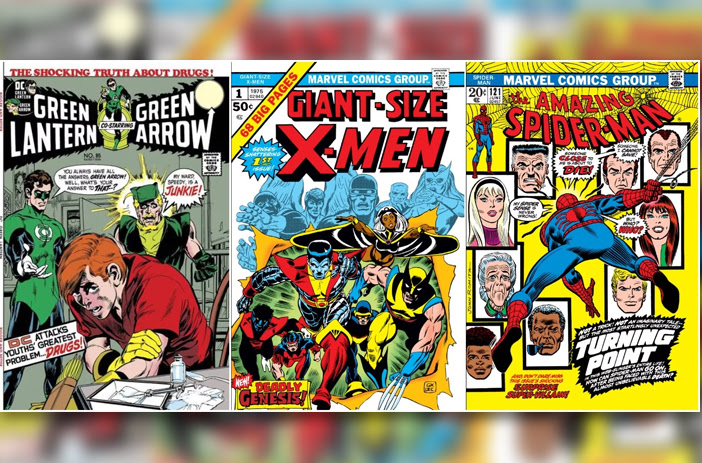
Another significant change that happened at the start of the Bronze Age was the general loosening of the Comics Code. As you likely know, the Comics Code was a way to regulate the stories and content of comics, and it came to dominate the industry and screened the kinds of comics that could even be published. This ended up following the general trends of moral panic and worry over media corrupting the youth, so comics during these earlier eras were very avoidant of certain kinds of topics.
One of the most illustrative examples was from Spider-Man. Nixon's administration was kicking off the war on drugs and wanted Stan Lee to help promote it to the youth by running an anti-drug storyline in the ever-popular Spider-Man comics. The Comics Code, though, prevented comics from portraying drug use at all.
The stories were published anyway, and the CCA realized they needed to be more flexible. Along with loosening rules on drug portrayal, they also relaxed rules against supernatural and horror comics, and new heroes like Ghost Rider, Swamp Thing, Morbius, and more were all created or revived.
How Did the Bronze Age Go?
The Bronze Age is largely considered to have a few key trends. One of them was the push towards more adult-oriented topics and themes and even more purely adult comics. After all, comics fans were adults now, and they wanted more than just their kiddy stories.
At the same time, comics prices were on the rise. Early on in the 70s, comics often cost 10 or 15 cents per issue. By the end of the Bronze Age, the price had skyrocketed, and your typical comic might cost 60 cents an issue. Of course, that's still nothing by our modern standards – with new issues costing $4-$5 – but back then, it was significant.
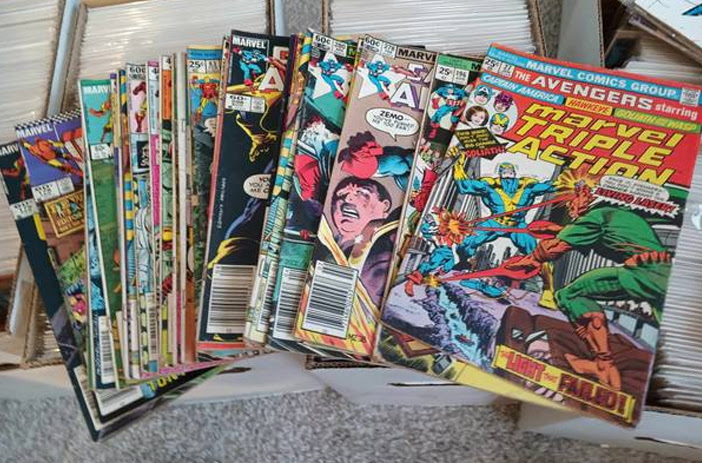
You also often saw various workarounds to the Comics Code Authority. For example, "Comic Magazines" appeared; by printing in black and white and including articles and other media in addition to comics, these larger-format comics were technically classified as magazines and thus didn't have to care about the CCA.
This is also where non-white characters started to get more attention. Characters like Shang-Chi and Black Lightning are from the Bronze Age, and older non-white characters were able to have their appearances on the covers of comics more than ever before.
Also noteworthy was the DC Implosion. The Bronze Age is largely characterized by a huge array of new characters being introduced. Many of them succeeded and are currently modern icons; others weren't popular at all and faded into obscurity. DC launched tons of new titles, but it was unsustainable and nearly destroyed the company and the industry. Thankfully for all of us, it recovered.
What Ended the Bronze Age?
The Bronze Age didn't end any more strictly than it started. Some people, including many comic fans, peg the end of the Bronze Age and the start of the Copper Age in 1983. This was when Marvel's Secret Wars was published, and it kicked off an entire era of events happening in comics. It wasn't just about isolated storylines and the occasional cross-over; it was world-ending, world-rebooting, publisher-encompassing events. This, alongside a huge push for merchandising from Mattel and others, was a huge shift in the industry.
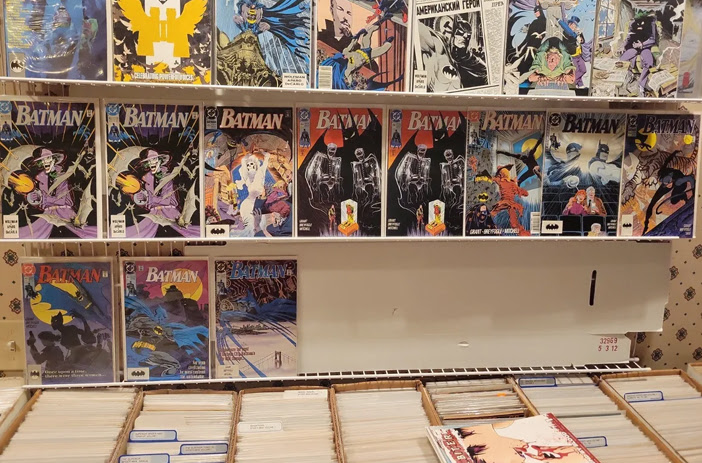
Others put the end of the Bronze Age in 1985 or even 1986. This was when DC was publishing the Crisis on Infinite Earths, which was a large reboot of their entire universe and made for a good milestone in comics lore. Really, the date you choose to call the end of the Bronze Age depends on whether you care more about the lore and stories of the characters or focus more on the social and economic aspects of comics. Either way, by 1987, we were firmly in the Copper Age.
Noteworthy and Valuable Bronze Age Keys
So, what are the most valuable and important key issues from the Bronze Age? How much do they go for, and what can you expect out of a collection from this era?
The Most Valuable Comic of the Bronze Age
The most valuable comic of the entire age is arguably The Incredible Hulk #181. This issue is the first full appearance of Wolverine, and it has a record-high sale price of $150,000. Most average copies are more likely to be sold in the $2,000 range these days, of course, but high-grades are always more valuable.
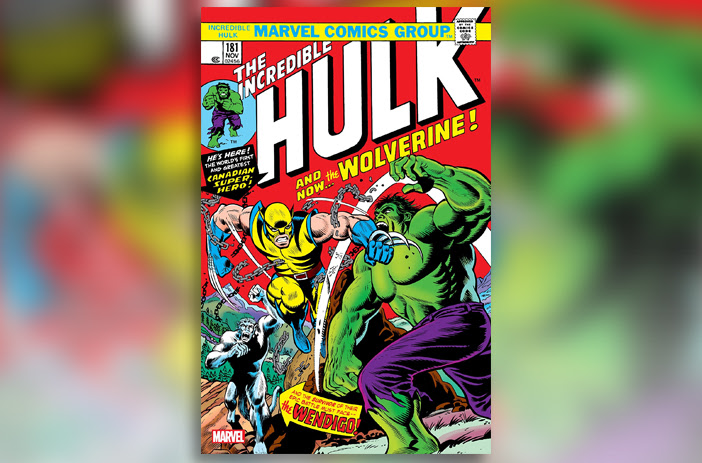
This is a far cry from the top-tier values of earlier ages, but it shows that Bronze Age keys can still hold some significant value.
Average Keys and Mid-Value Comics
The high-water mark isn't always the best metric to use when judging comics. After all, Superman #1 might be the most valuable comic in the world, with a record sale of $5.3 million dollars, but that doesn't mean every comic from the Golden Age is worth millions.
The same is true of most Bronze Age comics. Excluding the top 10-20% of the most valuable comics (don't worry, I'll get to those in a moment), there are lots of comics worth some money and many, many more worth a pittance.
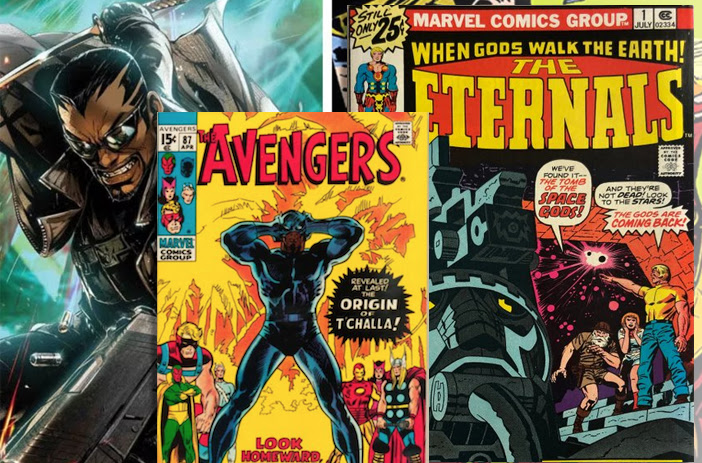
Taking a look at the 101-200 most valuable keys from the Bronze Age, you can see that the most valuable, highest-graded examples of many of these keys sell for at most $2,000, and many more in the $500 to $1,000 range. Low-grade copies of these sell for no more than $100 and often much less. These include keys such as:
- The origin of Black Panther
- The first appearance of Kitty Pryde
- The origin of Blade (with a new movie and game coming soon; keep an eye on this one!)
- The first appearance of Power Girl
- The origin of the Eternals
Many of these keys are being tapped for modern media and may see a resurgence. After all, the mass number of characters and plots introduced in the Bronze Age makes for fertile ground to mine for stories, and our modern media machine loves nothing more than to bank on nostalgia.
More Valuable Bronze Age Keys
So, what are some of the other more valuable key issues from the Bronze Age?
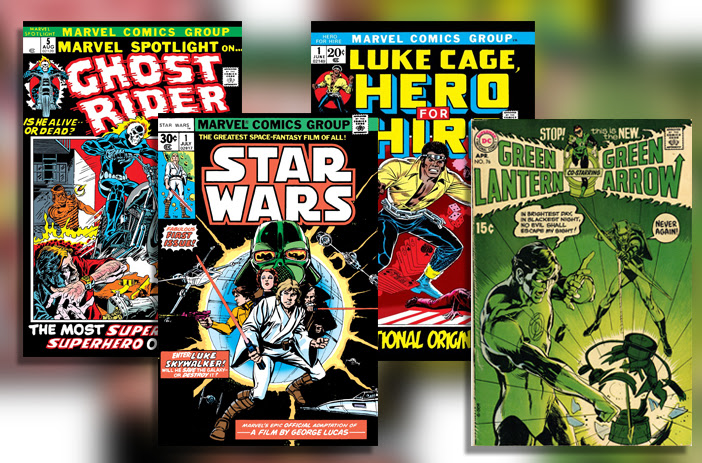
Here are eight you're likely to be very happy to find in your collection:
- Marvel Spotlight #5, the first appearance of Ghost Rider. Record sale of $264,000.
- Green Lantern #76, the relaunch and partnership between Green Lantern and Green Arrow. Record sale of $32,000.
- Werewolf by Night #32, the first appearance of Moon Knight. Record sale of $31,000.
- Star Wars #1 (35-cent price variant). Testing the markets for higher prices, this is the rarer version. Record sale of $40,000.
- Luke Cage #1, the origin of Luke Cage. Record sale of $26,000.
- Giant-Size X-Men #1, the first team-up with Wolverine joining the crew. Record sale of $45,000.
- Superman's Pal Jimmy Olsen, the first appearance of Darkseid. Record sale of $16,000.
- Iron Fist #14 (35-cent variant.) Another price variant, this is the rarer version. Record sale of $15,000.
There are certainly more comics in the valuable pile, and these prices can vary wildly. You can see other top comics on lists like this one.
Getting Gold from Bronze
If you're a collector born in the 70s or 80s, there's a reasonable chance you have a decent nostalgia for – and collection of – Bronze Age comics. Now is definitely a good time to consider selling them. Interest in some of these comics and characters has never been higher!
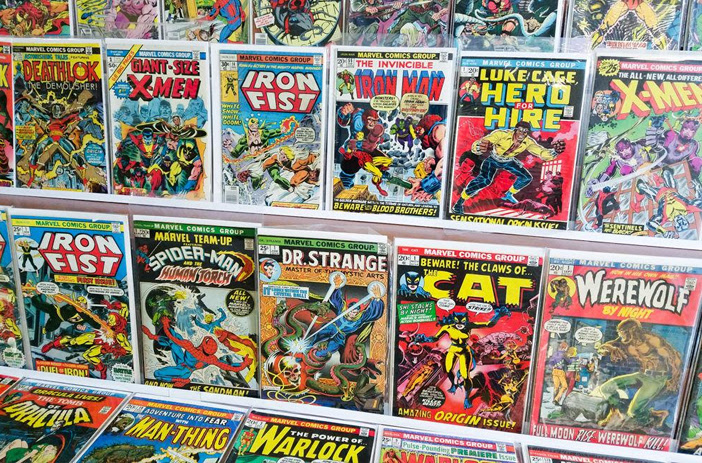
If you're interested in appraising your collection, we're happy to help. All you need to do is click here and fill out our form with a description of your collection. We'll help with appraisals and offer ideas of what you can do with your collection with no pressure and no obligations. Drop us a line! We'd love to see what you have.


